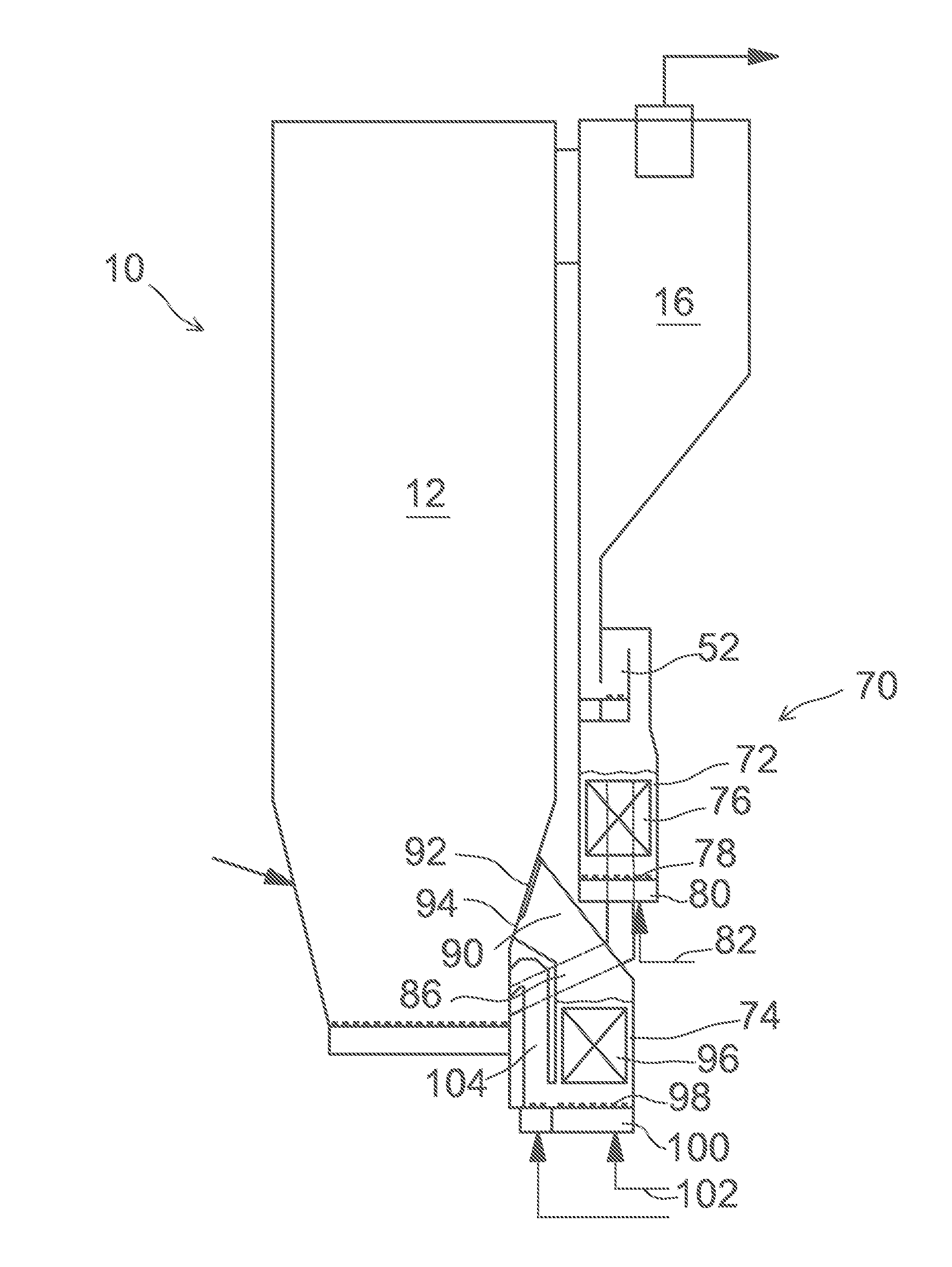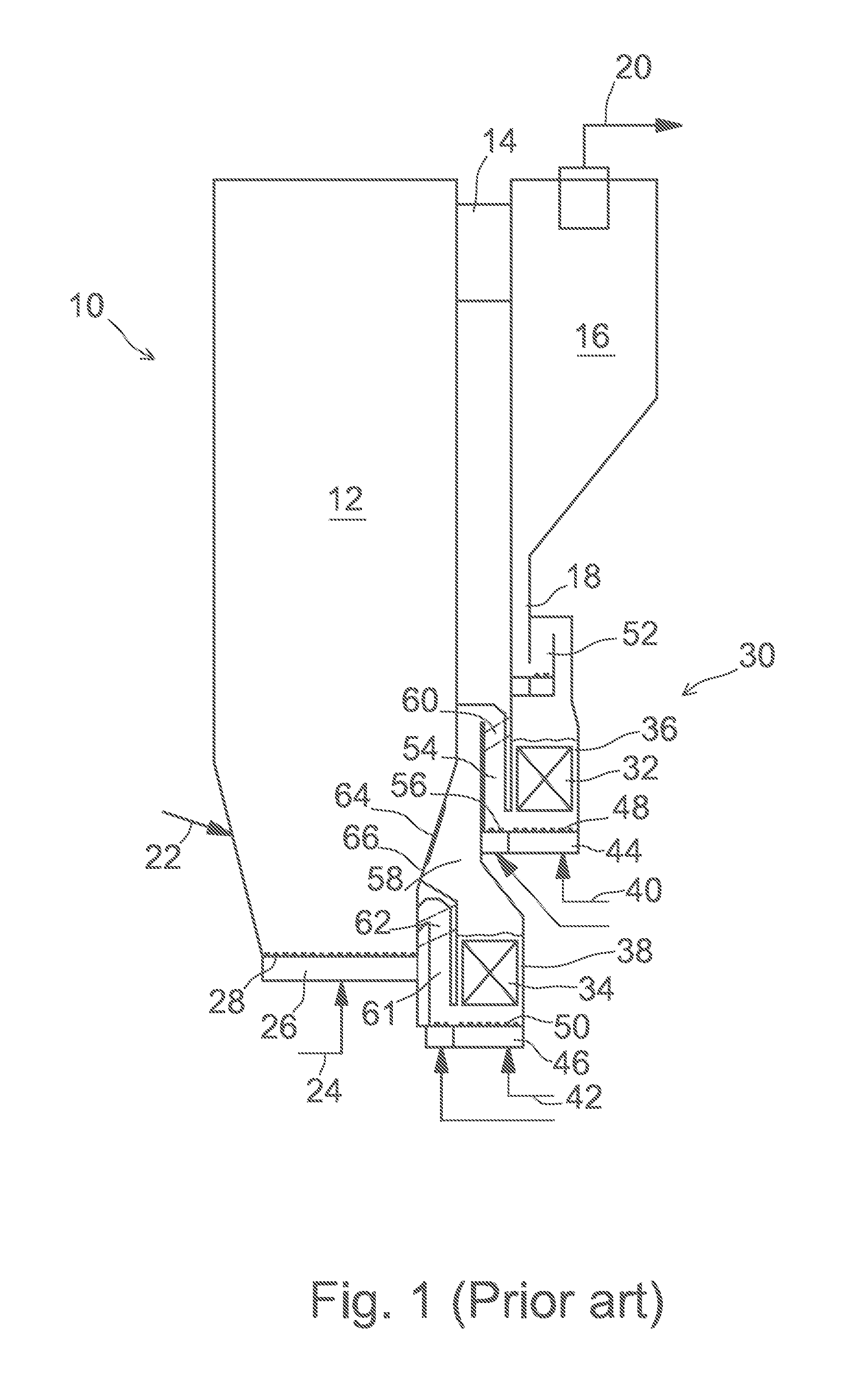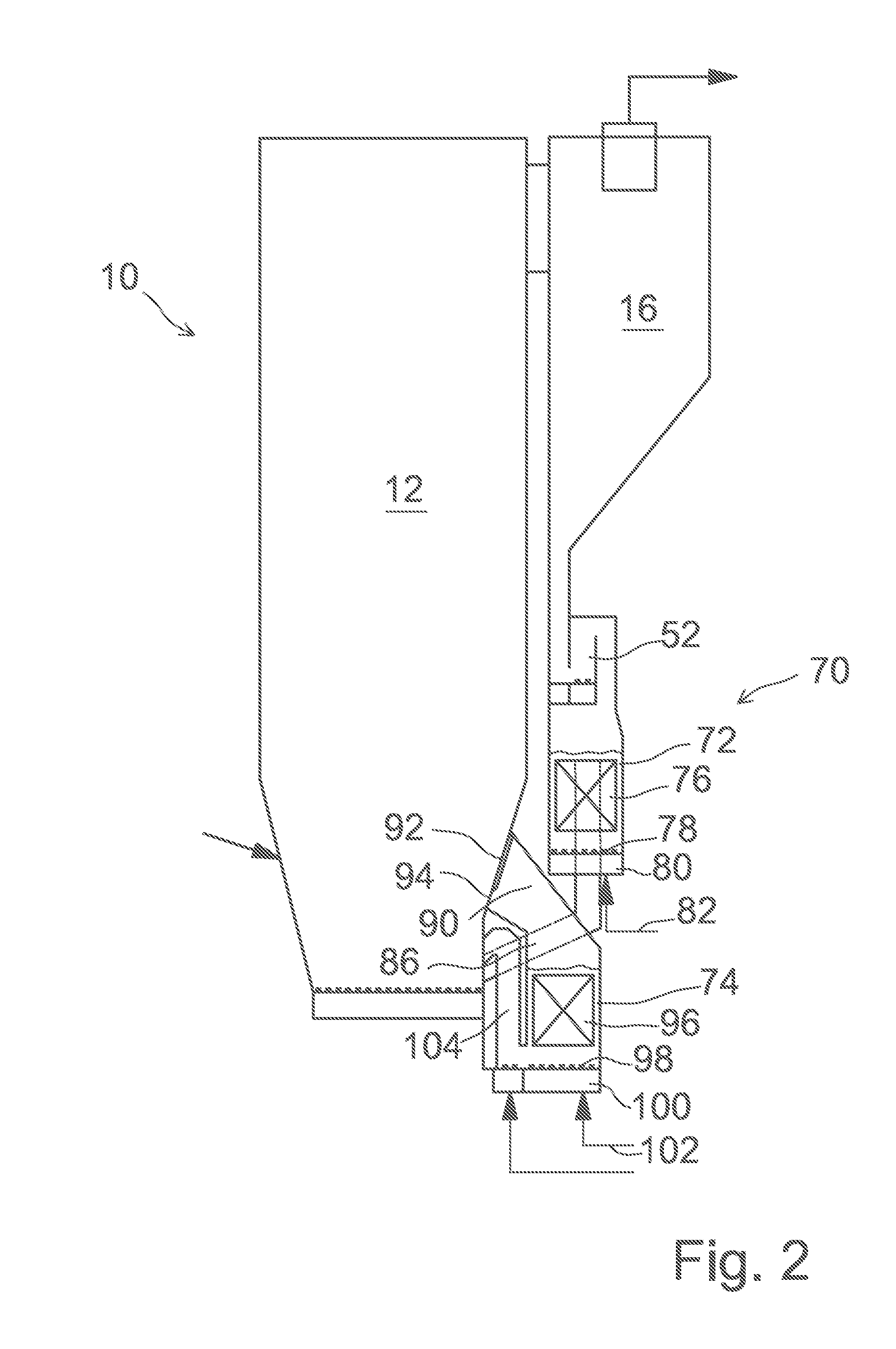Circulating Fluidized Bed Boiler Having Two External Heat Exchangers for Hot Solids Flow
- Summary
- Abstract
- Description
- Claims
- Application Information
AI Technical Summary
Benefits of technology
Problems solved by technology
Method used
Image
Examples
Embodiment Construction
[0039]FIG. 1 illustrates a prior art circulating fluidized bed (CFB) boiler 10 comprising a furnace 12 for combusting fuel, an outlet channel 14 connected to the upper section of the furnace 12 for the discharge of flue gas out of the furnace 12, a solids separator 16 for receiving the flue gas via the outlet channel 14 from the furnace 12, and for separating solid particles from the flue gas. The CFB boiler 10 further comprises, at the lower portion of the solids separator 16, a return channel 18 for taking the hot solids separated by the solids separator 16 out of the separator 16 towards the lower section of the furnace 12, and, at the upper portion of the solids separator 16, a flue gas duct 20 for removing cleaned flue gas to the backpass of the boiler 10, gas cleaning devices, and further, through the stack to the environment. The outlet channel 14, the solids separator 16, and the return channel 18 form a so-called external hot circulation, where the hot solids entrained in t...
PUM
 Login to View More
Login to View More Abstract
Description
Claims
Application Information
 Login to View More
Login to View More - R&D
- Intellectual Property
- Life Sciences
- Materials
- Tech Scout
- Unparalleled Data Quality
- Higher Quality Content
- 60% Fewer Hallucinations
Browse by: Latest US Patents, China's latest patents, Technical Efficacy Thesaurus, Application Domain, Technology Topic, Popular Technical Reports.
© 2025 PatSnap. All rights reserved.Legal|Privacy policy|Modern Slavery Act Transparency Statement|Sitemap|About US| Contact US: help@patsnap.com



